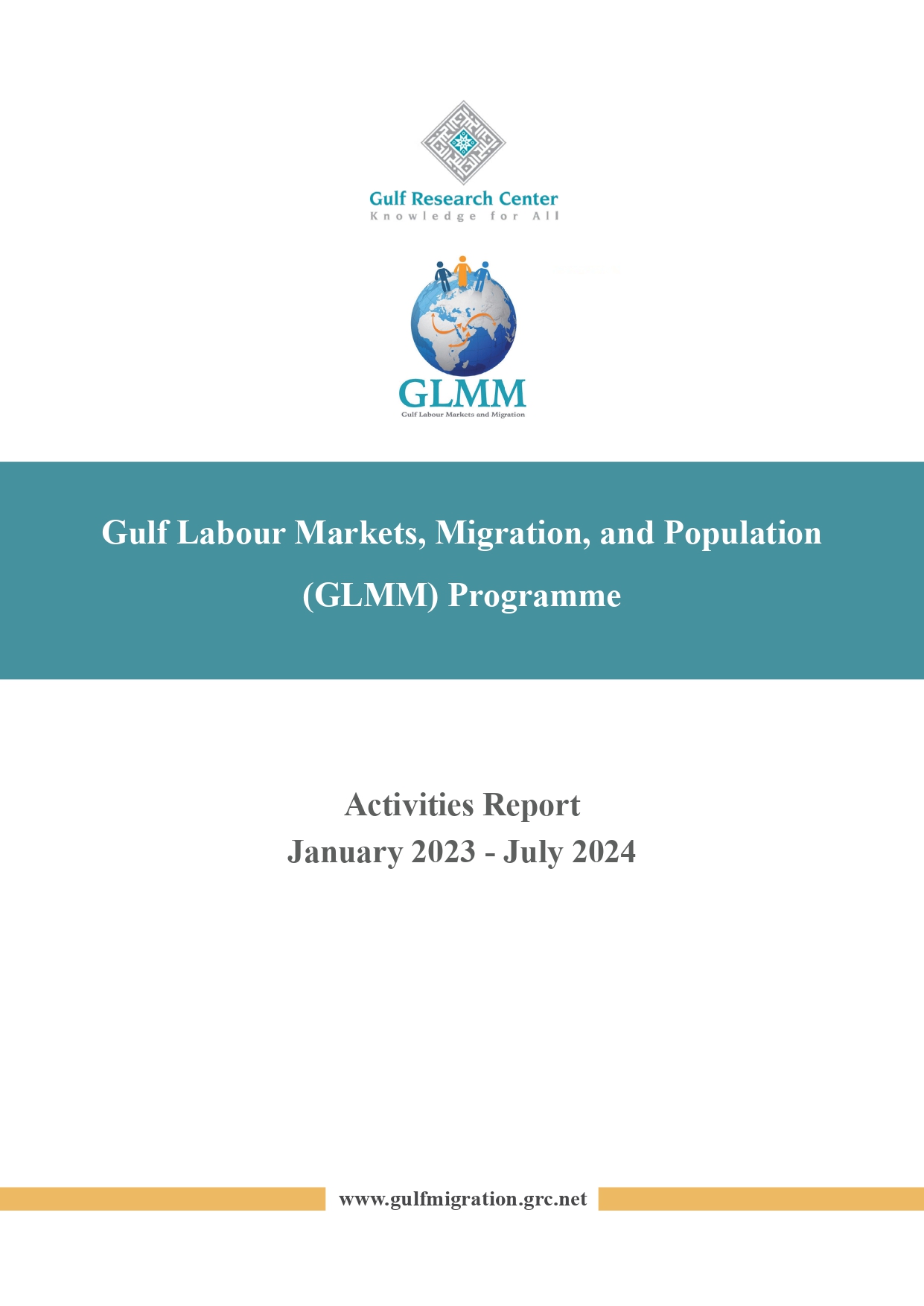Saudi Arabia: Total population (aged 15 and above) by nationality (Saudi/ non-Saudi, sex and sector of employment (governmental, private; domestic) (Q4, 2022)
| Saudis | Non-Saudis | Total | |||||||
| Males | Females | Total | Males | Females | Total | Males | Females | Total | |
| Governmental | 966,722 | 609,364 | 1,576,086 | 96,975 | 61,025 | 158,000 | 1,063,697 | 670,389 | 1,734,086 |
| Private | 1,333,348 | 861,197 | 2,194,545 | 6,945,931 | 281,757 | 7,227,688 | 8,279,279 | 1,142,954 | 9,422,233 |
| Domestic | 0 | 0 | 0 | 2,630,027 | 972,012 | 3,602,039 | 2,630,027 | 972,012 | 3,602,039 |
| Total | 2,300,070 | 1,470,561 | 3,770,631 | 9,672,933 | 1,314,794 | 10,987,727 | 11,973,003 | 2,785,355 | 14,758,358 |
Source: Register-based Labour Market Statistics, General Authority for Statistics (GAStat)
- Data collection methodology
LFS were first conducted in 2001 and became bi-annual after 2006. Data were collected through nationally representative household sample surveys, which sampling was based on most recent censuses.
Since 2016, Labour Force Surveys have been conducted and published on a quarterly basis, based on a
household telephone survey conducted by GAStat. Employment data extracted from administrative records were also introduced as a complement to the results of Labour Force Surveys in Labour Market Statistics’ publications, starting on Q1 2017.
The present data is taken from administrative records.
GAStat Labour Market Statistics:
Estimates of figures and characteristics of employment in Saudi Arabia are taken from administrative
records from the following institutions:
– Ministry of Human Resources and Social Development (MHRSD)
(formerly Ministry of Labour and Social Development):
Supplies data on Government sector’s workers.
– General Organization of Social Insurance (GOSI):
Supplies data on:
- contributors on the job who are subject to social insurance laws and regulations in the private
and government sector;
- workers who terminated their contribution to social insurance during the quarter.
– National Information Center (NIC):
Supplies data on domestic workers (data owner: MHRSD).
Figures of workers in Labor Market statistics which were derived from administrative records do not include the following category:
1-Workers in the military and security sectors
2- Workers who are not registered in the civil service and social insurance records, which include:
– Saudis working for their own businesses and are not subjected to the labor regulations, also, not registered in social insurance, such as those who work in delivery through electronic apps
– Saudi employers who work in establishments and not registered in the social insurance
– Non-Saudi staff working in foreign international, political or military missions
3- Non-Saudi employees who come to the Kingdom for work that normally takes less than three months to be completed.
– The public (government) sector includes workers subject to civil service regulations and government employees subject to insurance regulations (GOSI).
– The category of domestic workers in Arab states encompasses professions performed within the household, such as maids, cooks, waiters, valets, butlers, laundresses, gardeners, gatekeepers, stable-lads, chauffeurs, caretakers, governesses, babysitters, tutors, secretaries etc.
These professions are classified in the class 9700 of section T of the International Standard Industrial Classification of all Economic Activities (ISIC), Rev. 4.
See: Department of Economic and Social Affairs, Statistics Division. “International Standard Industrial Classification of All Economic Activities Revision 4,” Statistical Papers, Series M No. 4/Rev.4, New York: United Nations, 2008, p. 269
https://unstats.un.org/unsd/publication/seriesm/seriesm_4rev4e.pdf.
Definitions and categories used by GAStat in Labour Markets Statistics (employment; unemployment;
occupation and activity sectors, etc.) are based on international standards:
For LFS methodology and definitions, see: https://www.stats.gov.sa/en/node/9787.
- Institution which provides data
General Authority for Statistics (GAStat)
- Data availability
Since 2021, GAStat has been publishing separately the employment data taken from administrative records, and unemployment/inactivity data as well as general indicators, calculated from the results of the field interviews conducted by GAStat (Labour Force Survey).
The present time-series was taken from the Register-based Labour Market Statistics– Q4, 2022
(English and Arabic versions)
https://www.stats.gov.sa/sites/default/files/LMS_2022_Q4_EN_1.xlsx
https://www.stats.gov.sa/sites/default/files/LMS_2022_Q4_AR_1.xlsx
Register-based Labour Market Statistics reports are accessible from:
https://www.stats.gov.sa/en/814
https://www.stats.gov.sa/ar/814
Date of access: 02 March 2024.
Keywords: Employment, Female Employment, Saudi Arabia, National & Foreign Labour, Domestic Workers
GLMM and GRC cannot guarantee that the link to access the source will not change; that the information will not be removed from the website it was obtained from; that no geo-blockages will be imposed; or that the information will not be available for any another reason.
Similar Posts:
- Saudi Arabia: Employed population by nationality (Saudi / non-Saudi) and sex (Q1 2017 – Q3 2021)
- Saudi Arabia: Employed population by nationality (Saudi /non-Saudi) and sex (Q1 2017-Q3 2022)
- Saudi Arabia: Employed population by nationality (Saudi /non-Saudi) and sex (Q1 2017-Q3 2023)
- Saudi Arabia: Saudi employed population by occupation category (Q1 2021-Q2 2024)
- Saudi Arabia: Non-Saudi employed population by occupation category (Q1 2021-Q2 2024)
Tags: Domestic Workers, Employment, Female Employment, National and Foreign Labour, Saudi Arabia





































































